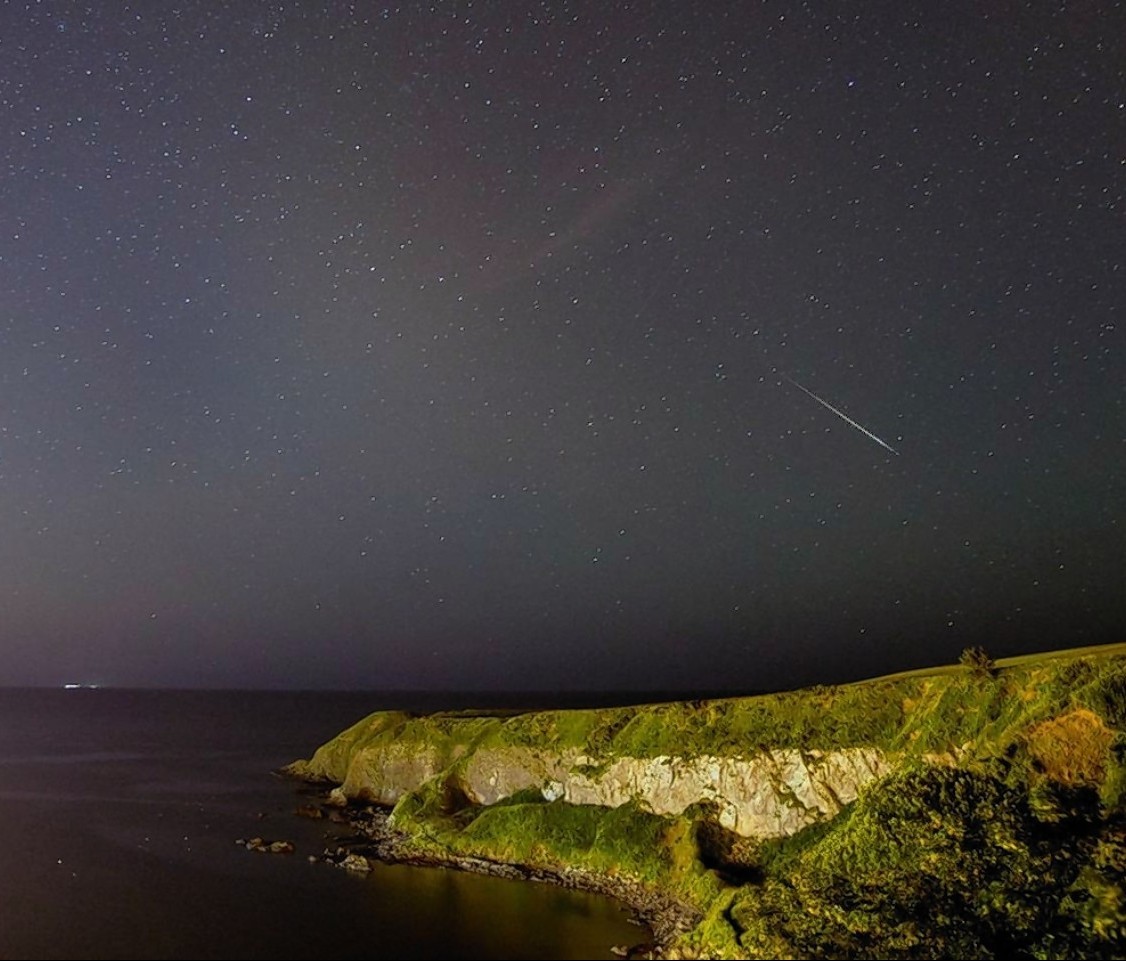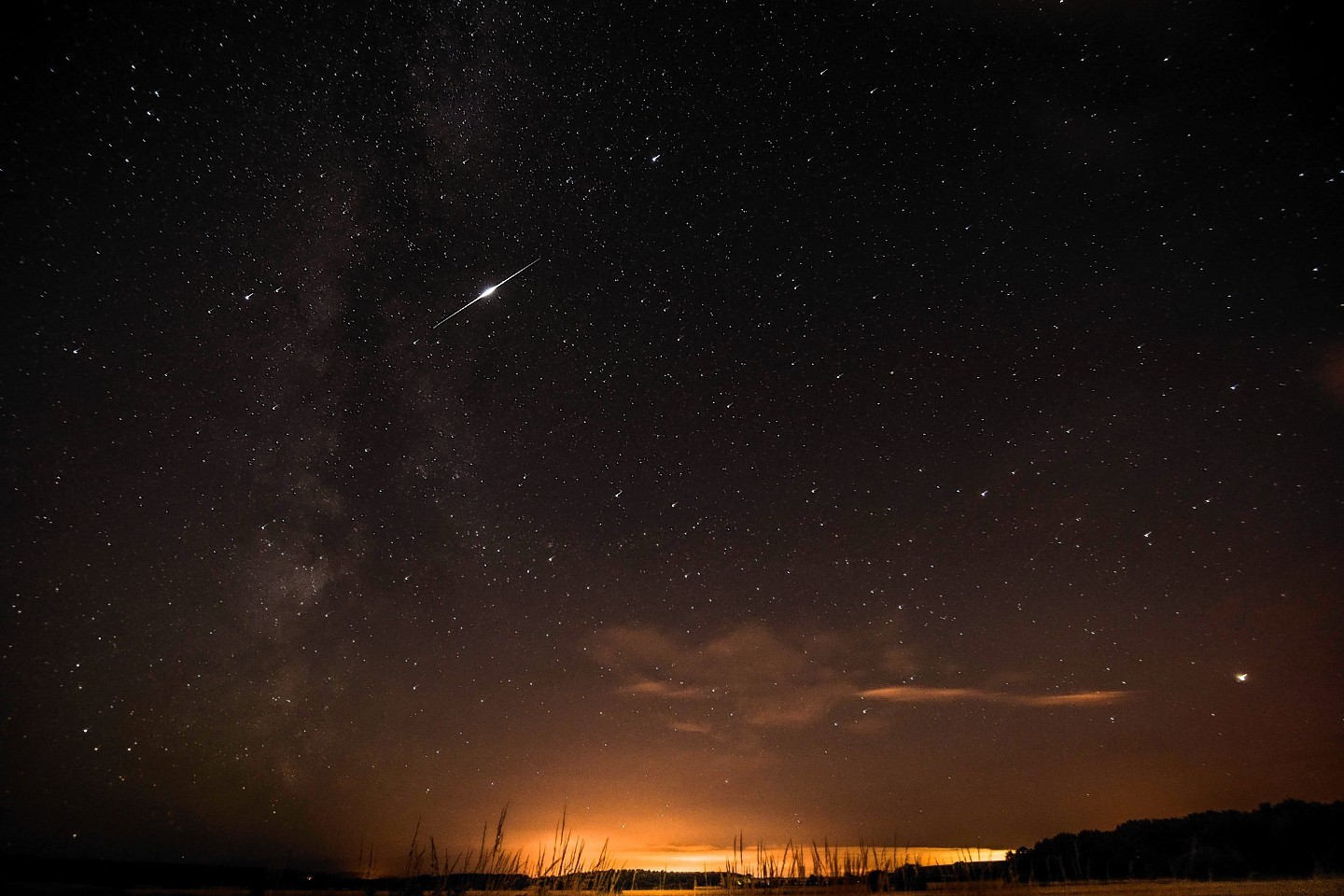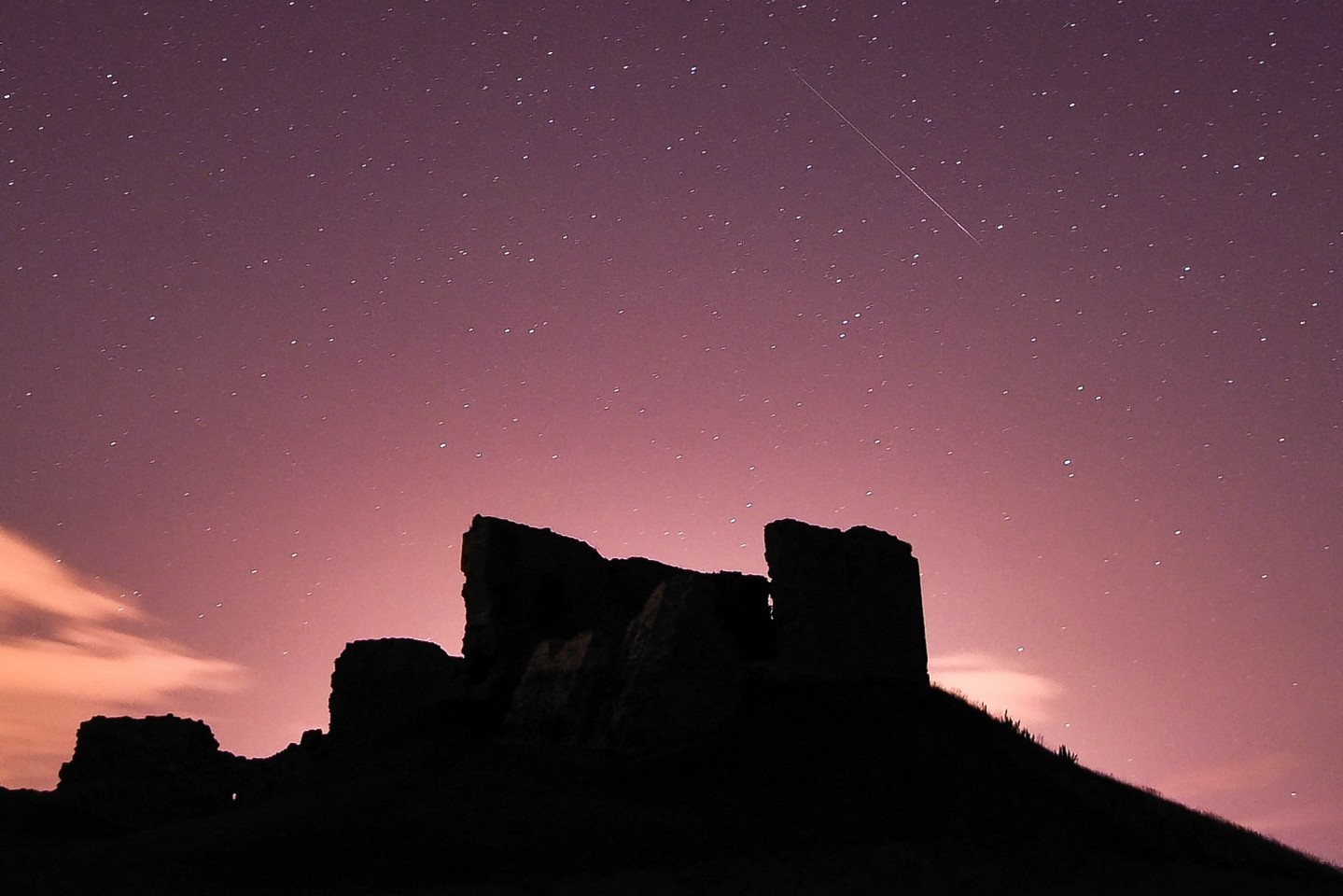Hundreds of multicoloured shooting stars lit up the night skies above the north and north-east in a spectacular celestial display.
The Perseid meteor shower takes place every August as Earth passes through the debris left behind by the Swift Turtle comet – which zooms through the inner section of our solar system once every 133 years.
The dust particles from the comet’s lingering tail enter our planet’s upper atmosphere at speeds of almost 130,000mph, combusting virtually instantly and creating awe-inspiring streaks in the night sky.
And Scotland was one of the best places in the UK to see the show, thanks to this week’s mostly clear skies and the country’s low levels of light pollution.
Neal Weston, secretary of the Aberdeen Astronomical Society, photographed some of the breathtaking meteors glowing a range of different colours from his home in Stonehaven.
He said: “When the dust particles from the comet pass through the atmosphere they get super-heated, which excites the oxygen and nitrogen molecules in the air, which themselves give off light.
“And of course the dust particles themselves give off their own light too, depending on what elements they’re made of.
“Green and reds are what you tend to get, sometimes blues and other colours, it’s the same phenomenon as you get with the aurora.”
Named after the Perseus constellation from which they appear to materialise from, the Perseids were caught on camera by stargazers all across the country.
One of the more dazzling images was taken by Brian Doyle just after 1am yesterday in Stonehaven, where a single blaze of light was captured tearing through the sky above Downies Point.
David England managed to snap two of the celestial bodies at once flitting above the ruins of Duffus Castle in Moray.
And Katrina Stewart succeeded in catching a Perseid seemingly crossing the Milky Way from her vantage point in Aberdeenshire.
Mr Weston said: “In terms of weather it’s been ideal this year, we’ve been quite successful in spotting the Perseids so far.
!They came very sporadically, but at one point I saw one every five minutes or so.”
The showers will continue until August 24, so there are still plenty more opportunities to see the shooting stars.


